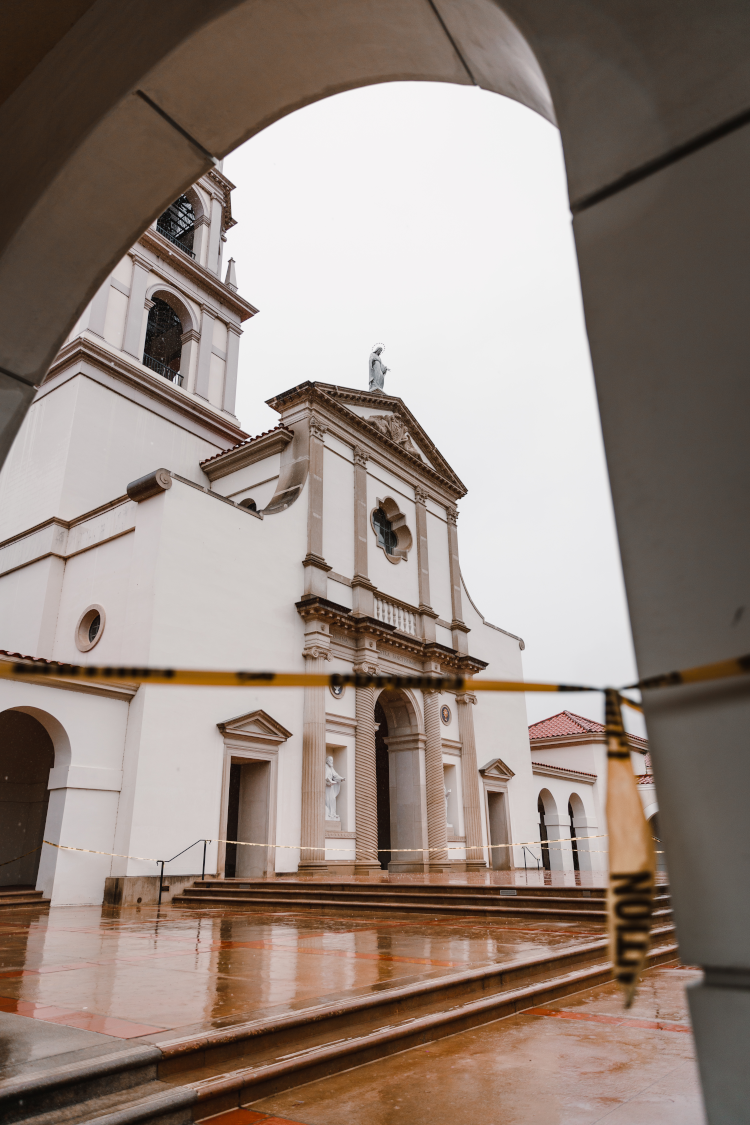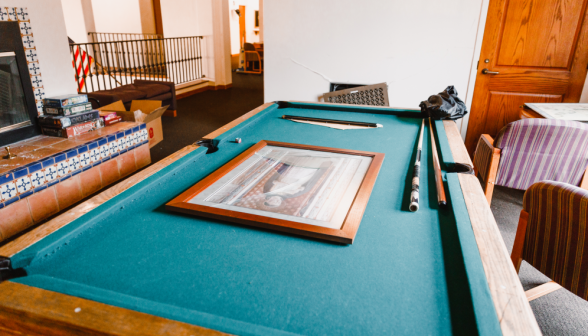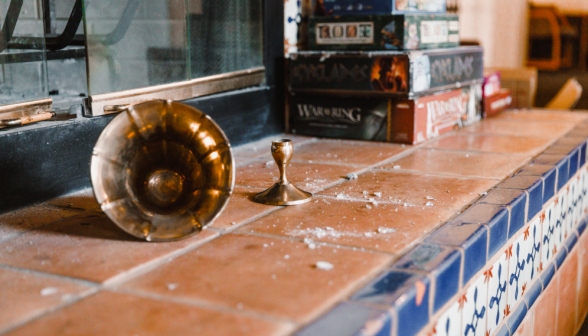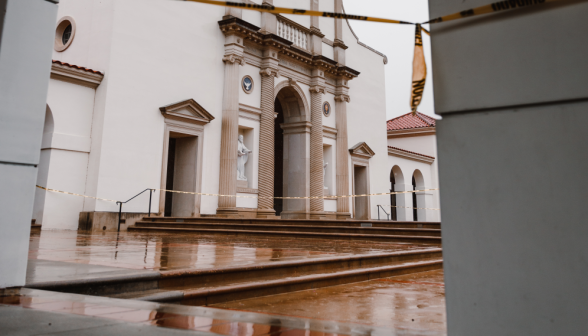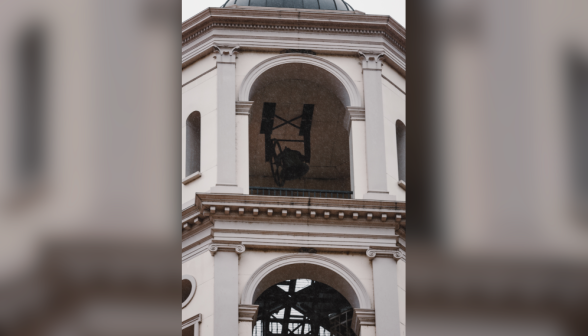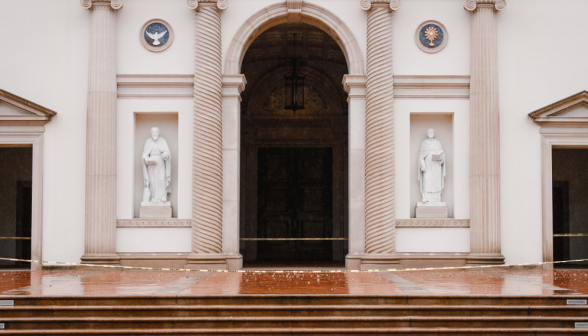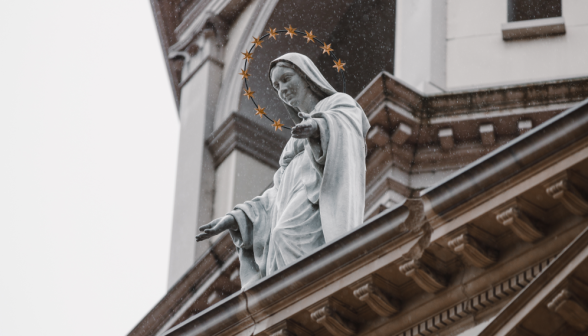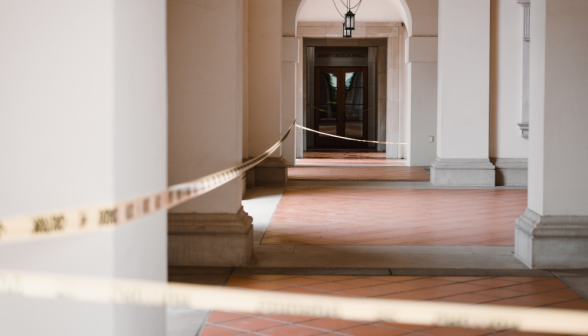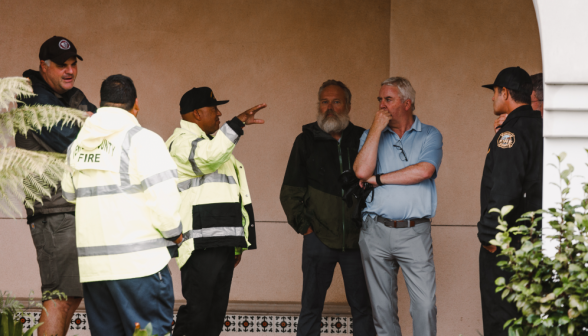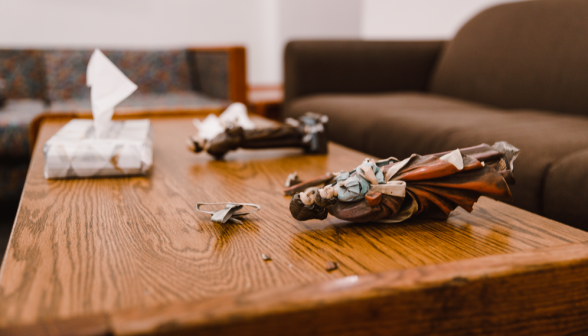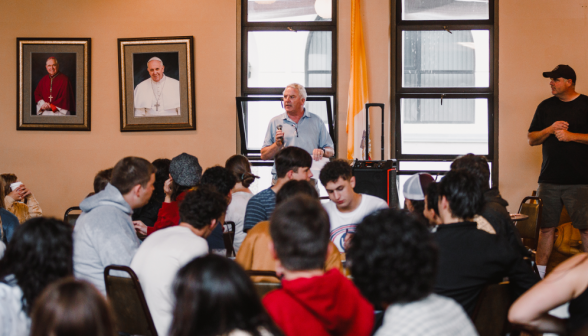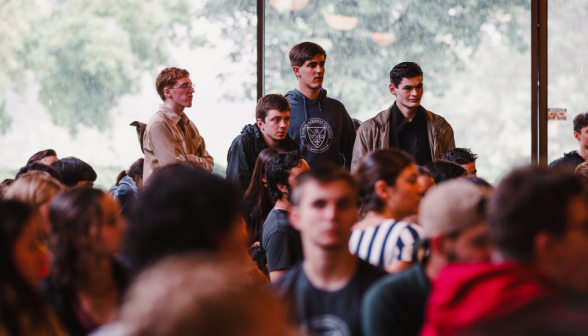Although College officials and the Ventura County Fire Department detected no signs of structural damage during an initial examination Sunday afternoon, the College took the precaution of closing the Chapel until a more thorough inspection could be completed. That meant postponing the start-of-the-year Mass of the Holy Spirit, which was scheduled to be offered at 8:30 a.m. on Monday. The morning’s Matriculation Ceremony — when members of the Class of 2027 are formally welcomed as the College’s newest students — nonetheless took place as originally planned in St. Cecilia Hall’s Fritz B. Burns Auditorium.
Around that same time, the College received good news: The County Building Department, having arrived and examined the Chapel, confirmed that there was no structural damage. The Mass of the Holy Spirit would be moved to 4:30 p.m. and, beginning the next day, Masses would resume their regular schedule.
“The Chapel is a relatively new building, having been completed in 2009, and it was designed to stand the test of time, even in an earthquake zone,” says Mark Kretschmer, the College’s vice president for operations. “Underneath its limestone façade is a base of reinforced concrete and structural steel, built to withstand Southern California’s seismic uncertainties, at least to the extent that modern technology allows. We’re grateful to God and to the building’s engineers that it held up so well.”
The only concern that emerged from the Chapel’s inspection regards the stability of the façade itself. As such, the College has cordoned off the Chapel plaza until the building’s engineer of record can examine the façade more closely. “When we get the engineer’s report, we can determine the extent of the damage and how to repair it,” adds Mr. Kretschmer. “Until then, though, the building is safe to use, but, as a matter of caution, we are keeping the plaza off limits.”
Meanwhile, a new academic year begins on schedule, at the campus that famously survived the Thomas Fire in 2017.
“We are profoundly grateful that the region weathered both the storm and the earthquake so well, and especially that all remained safe,” says President Paul J. O’Reilly. “We give thanks to God, to all those who have kept the College in their prayers, and to county officials, who have been so thorough and thoughtful in their assistance. We are delighted that we can move forward, undeterred, in our noble mission of Catholic education — now in its 53rd year.”
For more information, please contact:
Chris Weinkopf, Executive Director of College Relations
805-421-5926 |
# # #
About Thomas Aquinas College
A four-year, co-educational institution with campuses in California and Massachusetts, Thomas Aquinas College has developed over the past 50+ years a solid reputation for academic excellence in the United States and abroad. It is highly ranked by organizations such as The Princeton Review, U. S. News, and Kiplinger. At Thomas Aquinas College all students acquire a broad and fully integrated liberal education. The college offers one, four-year, classical curriculum that spans the major arts and sciences. Instead of reading textbooks, students read the original works of the greatest thinkers in Western civilization — the Great Books — in all the major disciplines: mathematics, natural science, literature, philosophy, and theology. The academic life of the college is conducted under the light of the Catholic faith and flourishes within a close-knit community, supported by a vibrant spiritual life. Graduates consistently excel in the many world-class institutions at which they pursue graduate degrees in fields such as law, medicine, business, theology and education. www.thomasaquinas.edu.








